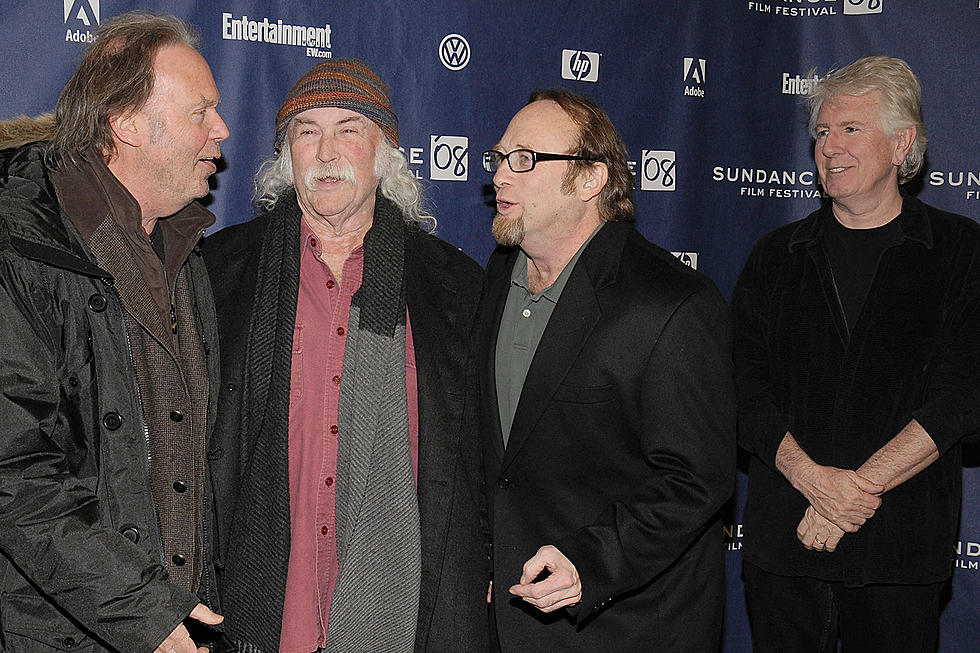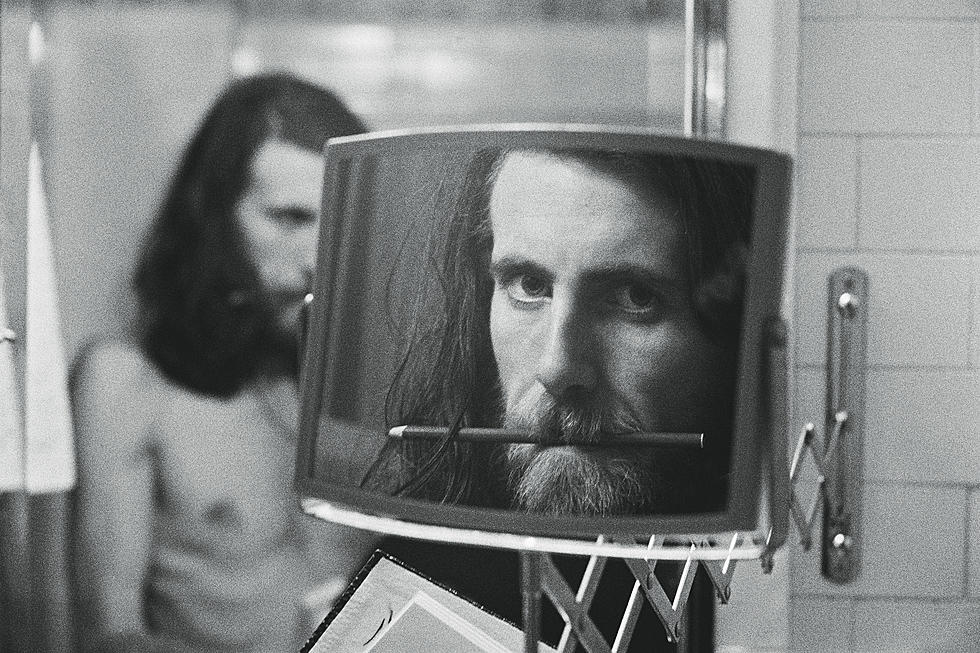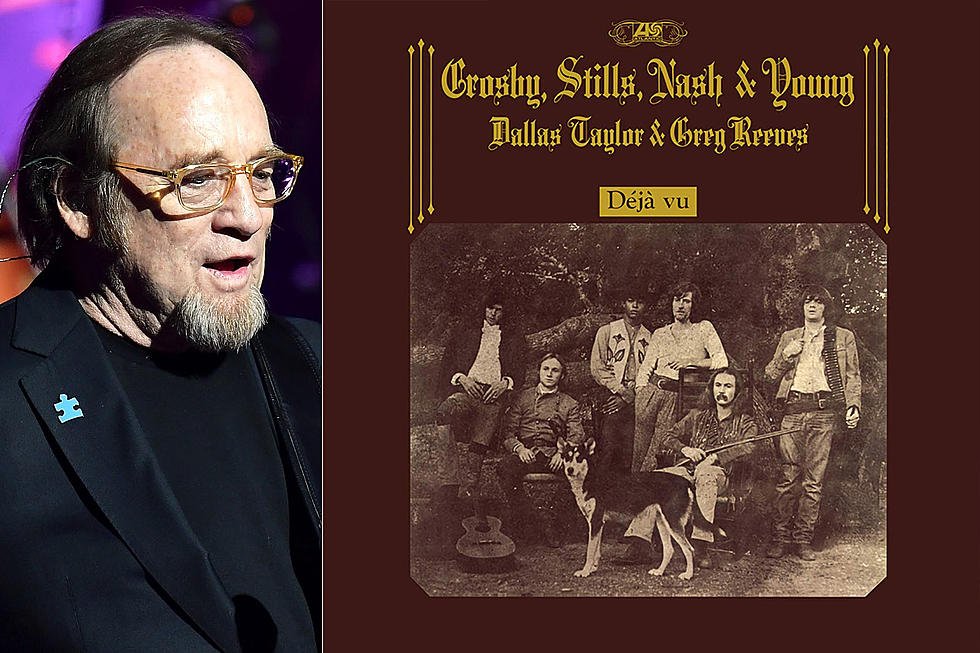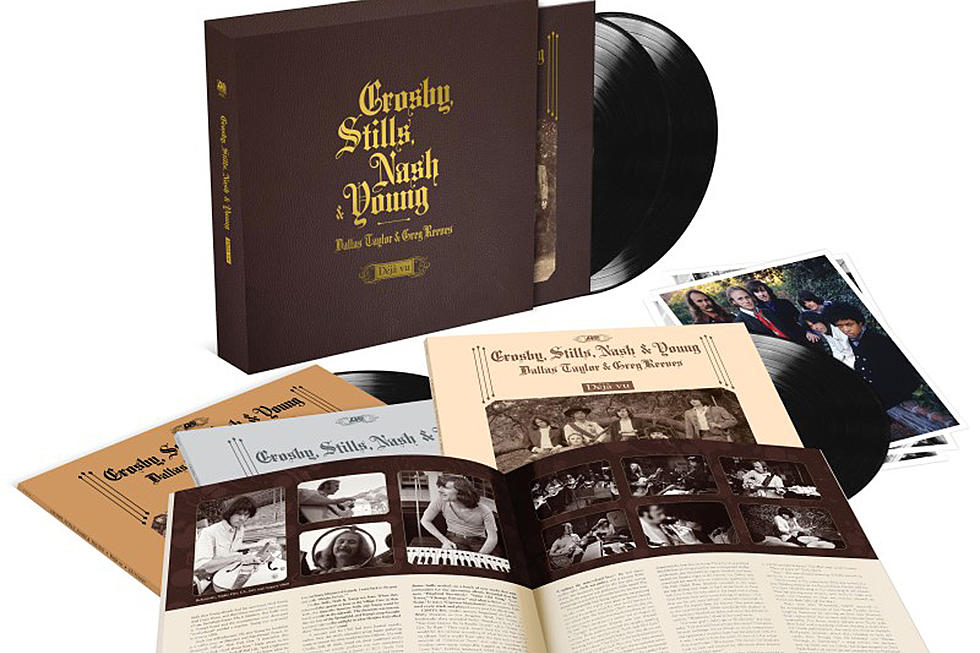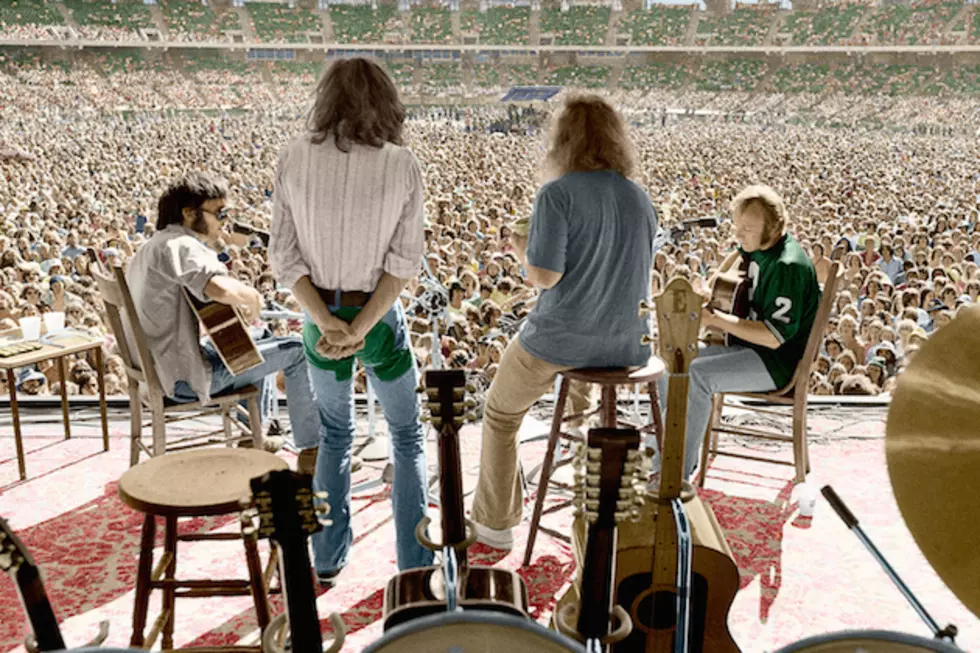
The Day Crosby, Stills, Nash and Young Launched Their ‘Doom Tour’
In the summer of 1974, the concept of "stadium rock" was still pretty much in its infancy. All that would change, however, when Crosby, Stills, Nash & Young reunited on July 9 in Seattle for the first date on their famously turbulent "Doom Tour."
The quartet had split after a 1970 tour, which was documented on the chart-topping 4 Way Street double album. In the aftermath, their solo careers blossomed, with Neil Young's Harvest being the most successful effort. But despite the squabbling that led to the group's implosion, they nonetheless knew that their contributions to the others' music couldn't be denied. David Crosby and Graham Nash released an album together and joined Young on a tour that resulted in the live album Time Fades Away. An attempt to bring Stephen Stills back for a proper CSNY album in 1973 called Human Highway broke down during the recording.
Regardless, in early 1974, concert promoter Bill Graham made an offer. "Bill called me in my room at the Chateau Marmont in Los Angeles in early '74," Nash told The Wall Street Journal. "Bill said a lot of money could be made, and we knew Bill was used to putting on large events and had just produced Bob Dylan's 40-date tour. Bill also pointed out that something on this scale had never been tried before, which sounded pretty cool to us."
Dylan's six-week tour, with the Band backing him up, marked his return to the road after the infamous 1966 tour of England and his subsequent motorcycle accident. More than five million people tried to buy tickets via mail-order for 650,000 seats among the 40 shows. That tour was captured on Before the Flood.
The foursome signed on with Graham, not just for the possibility of a large payday, but also the cultural statement it would make. "FM radio was making rock albums popular," Nash continued. "And many fans saw our tour as another shot at Woodstock, which they either had missed in '69 or wanted to revisit. The country's mood had shifted, too. Watergate was coming to a head and kids were fed up with government manipulation. They realized that, in large numbers, they had power. Our band stood for keeping it real, which connected with them."
Crosby agreed. "Looking out on the crowds, you could see that people still had the Woodstock vibe and were entranced by the music. But the rush wasn't the size of the audiences. It was what I felt from them. When you sit across from someone and feel what they're feeling, it's a beautiful thing. When you get 5,000 people feeling the same way, it's a palpable rush. When 50,000 people are feeling the same thing at the same time as you're playing, it's this big invisible wave crashing on you. We called that 'the juice.'"
Watch CSNY Perform 'Deja Vu' in 1974
Rehearsals began in May 1974 at Young's ranch in Northern California, where Young had built a full-size outdoor stage, and Tim Drummond (bass), Russ Kunkel (drums) and Joe Lala (percussion) were brought in to fill out the band. With roughly 80 songs to choose from (and that's not counting the time they each spent in their previous bands – Buffalo Springfield, the Byrds and the Hollies) and everybody wanting equal time for their songs, Nash said that opening night in Seattle featured 44 songs and went on for more than four hours. That was soon pared back by roughly a third.
But it wasn't long before they were back to fighting again. Young's On the Beach came out a week into the tour and he continued writing at an incredibly prolific pace. He felt that the lack of new material from the other three meant that he was carrying the load.
"The tour was disappointing to me," Young said in Jimmy McDonough's book, Shakey. "I think CSNY really blew it. Last time I played with 'em had been two or three years before that. They hadn't made an album, and they didn't have any new songs. What were they doing? How could they just stop? They wanted to put out a live album, and I wouldn't put it out – because it had all my songs on it."
Watch CSNY Perform 'Helpless' in 1974
Young began traveling separately and also served as, in Nash's words, the "conscience" of the group. "One night after a show, we all went back to our hotel suite where we had the entire top floor," Nash recalled. "It was decadent. Every night there were huge plates of food set up, like cold lobster for dozens of people. Neil was disgusted by the excess. There were even pillows embroidered with [opening act] Joni [Mitchell]'s tour logo as well as china and luggage. Hey, we didn't ask for all that. This soured Neil a bit and, in retrospect, he was right."
Of course, there was one excess that couldn't be forsaken. "After that tour," Crosby said. "I realized that cocaine has a terrible effect on everything and that all drugs are not the same. If we had just been smoking pot, we probably would have been the same old band."
Nash told Rolling Stone, "It was a very challenging tour. We tried to keep our spirits up and keep ourselves focused as a band, but with all the chaos going on and the distractions and the drugs, I'm amazed we got away with what we did, quite frankly."
To capitalize on the tour's success, Atlantic released So Far, a greatest hits compilation, even though they had only released two studio albums by that point. It didn't matter to the public, which sent it to No. 1.
It wasn't just the drugs that were affecting the performances. The technology that made a concert in an arena or a stadium possible was not conducive to their unique and intimate harmonic blend, which was the group's stock-in-trade. The quieter songs were fine, but when it came time to crank up the volume, their magic was often lost.
"We had good monitors," Crosby told Rolling Stone. "But Stephen and Neil were punching well over 100 dB from their half-stacks. Graham and I simply couldn't do the harmonies when we couldn't hear ourselves. Also, when you play a stadium you almost have to do a Mick Jagger where you wave a sash around and prance about. I can't quite do that. We did what we could, but I don't know how many people in the audience really got it."
Watch CSNY Perform in 1974
In August, they began recording the shows, which culminated at London's Wembley Stadium on Sept. 14. Highlights from the nine shows that were recorded were compiled on 2014's CSNY 1974 box set. The wonders of modern editing technology allowed Nash to fix some of the mistakes from the original masters.
"I wanted the album to be the best representation of the experience of the show," he said. "Things were loud. Some of the vocals were out of tune, so I had to tune them. I did everything I could to make it sound as acceptable as possible. If I found one line that was flatly out of tune, I'd go to a different night, find the line in tune and put it there. We did a lot of work to make it feel like it was completely spontaneous and that you were witness to an ideal show."
When the dust cleared, the tour grossed about $11 million, but its members, according to Nash, walked away with less than $500,000 each, causing them to split with Graham and sign with David Geffen. "It was obvious that between Bill Graham, the promoters and a bunch of others, they all had a good time – let's just put it that way," Nash said. "I'm really not blaming anybody. It was 40 years ago. What the fuck can I do?"
See CSNY Among the Top 100 Albums of the '70s
More From Ultimate Classic Rock
